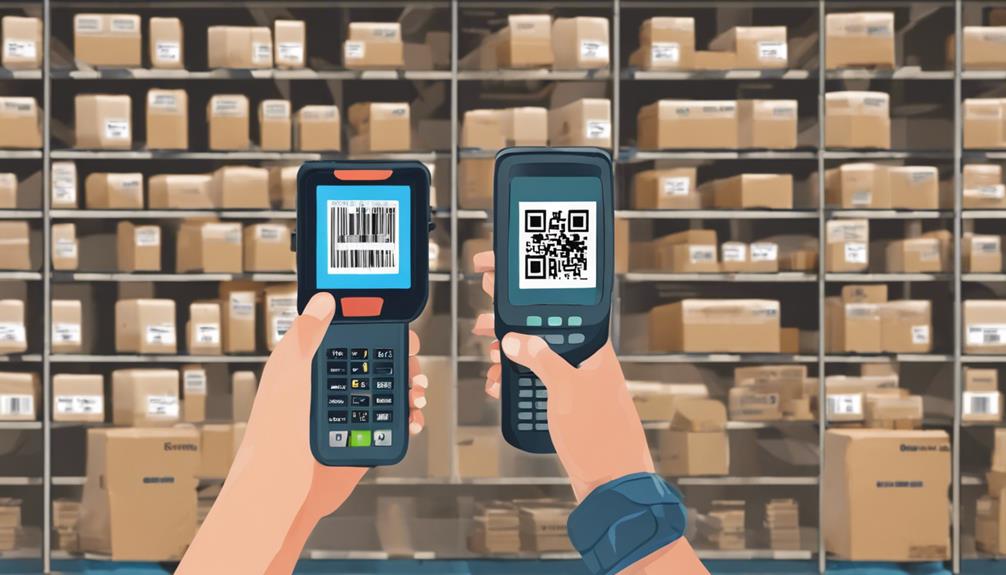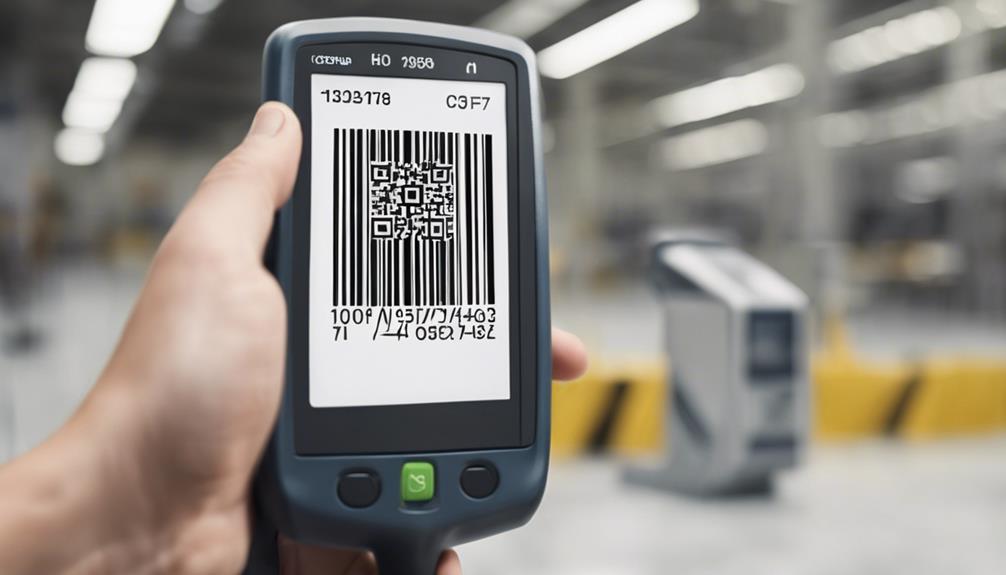Improve business processes with barcode indexing as a well-oiled machine, each cog and gear working seamlessly to drive success. Now, picture how incorporating barcode indexing can be the missing piece that optimizes your operations to new levels of efficiency and accuracy. From inventory management to productivity enhancements, the potential benefits are vast. But how exactly can barcode indexing revolutionize your business processes and propel your organization towards greater success?
Role of Barcode Indexing in Process Improvement
Barcode indexing plays a crucial role in streamlining business processes and enhancing overall efficiency. By utilizing barcode technology, businesses can significantly improve data accuracy and achieve substantial time savings. In terms of data accuracy, barcode indexing ensures that information is recorded and tracked with minimal errors, reducing the likelihood of manual input mistakes. This accuracy is vital for inventory management, order fulfillment, and other operational tasks that rely on precise data.
Additionally, barcode indexing saves time by expediting processes such as inventory audits, product tracking, and document retrieval. Scanning barcodes is much quicker than manual data entry, allowing employees to focus on more value-added activities. This time-saving aspect translates into increased productivity and smoother workflows throughout the organization.
Impact on Productivity
Implementing barcode indexing in your business processes can significantly boost productivity by streamlining data entry, reducing errors, and speeding up inventory management. The efficiency enhancement provided by barcode systems allows for quicker access to information, improved accuracy in tracking inventory levels, and overall time savings in day-to-day operations. By leveraging barcode technology, you can experience tangible productivity benefits that contribute to the overall success and growth of your business.
Productivity Benefits
By introducing barcode indexing into your business processes, you can experience significant boosts in productivity. The productivity benefits of implementing barcode indexing include cost savings and improved time management. Barcode systems streamline data entry processes, reducing the likelihood of human error and increasing efficiency. This leads to cost savings by minimizing mistakes that could result in financial losses. Furthermore, barcode technology enables quick and accurate tracking of inventory and assets, saving time that would otherwise be spent manually recording and searching for items.
In terms of time management, barcode indexing allows for faster data retrieval and processing. Employees can quickly scan barcodes to access information, eliminating the need for manual searches through physical files or databases. This efficiency not only saves time but also enables staff to focus on more critical tasks, ultimately enhancing overall productivity. By leveraging barcode indexing, businesses can optimize their operations, reduce unnecessary delays, and improve workflow efficiency.
Efficiency Enhancement
To enhance efficiency and boost productivity within your business processes, incorporating barcode indexing offers a strategic solution. Barcode indexing facilitates cost reduction through streamlined workflows. By automating data entry processes, you can significantly reduce the time and resources required for manual input, leading to cost savings across various operational areas. Furthermore, workflow optimization is achieved as barcode scanning enables swift identification and retrieval of information, enhancing the overall speed and accuracy of tasks.
Incorporating barcode indexing also aids in error prevention and ensures data accuracy. Human errors in data entry are minimized as barcode systems provide a reliable and consistent method of capturing information. This accuracy not only improves the quality of your business processes but also reduces the need for time-consuming error correction procedures.
Inventory Management Benefits
When implementing barcode indexing for inventory management, you can expect enhanced inventory accuracy through real-time updates and reduced human error. This technology enables streamlined stock tracking, allowing you to easily locate items within your inventory system. By utilizing barcode indexing, you can achieve increased operational efficiency by optimizing inventory processes and ensuring timely fulfillment of orders.
Enhanced Inventory Accuracy
Enhanced inventory accuracy is a crucial component of effective inventory management systems. By utilizing barcode indexing, businesses can achieve inventory optimization and significant error reduction. Barcode systems enable real-time updates on stock levels, ensuring that inventory data is always accurate and up-to-date. This accuracy leads to improved decision-making processes, as managers can rely on precise inventory information to plan effectively.
The benefits of enhanced inventory accuracy extend beyond operational efficiency. Businesses can experience cost savings by reducing instances of stockouts or overstocking, which can result in financial losses. With barcode indexing, manual errors in data entry are minimized, leading to more reliable inventory records. This accuracy also enhances customer satisfaction, as orders can be fulfilled promptly and accurately.
Streamlined Stock Tracking
How can businesses effectively track their stock to optimize inventory management processes and achieve operational efficiency? By implementing barcode indexing for streamlined stock tracking, companies can significantly improve their inventory optimization and reduce costs. Barcode systems provide real-time visibility into stock levels, enabling businesses to make informed decisions promptly. With accurate data at their fingertips, companies can avoid overstocking or stockouts, leading to better warehouse organization and smoother operations.
Barcode indexing enhances inventory accuracy by eliminating manual errors and ensuring that the right products are in the right place at the right time. This level of precision minimizes the risk of stock discrepancies, ultimately saving time and resources that would otherwise be spent reconciling inventory records.
Increased Operational Efficiency
Increased operational efficiency in inventory management is a critical component of a successful business operation. Implementing barcode indexing can significantly enhance this efficiency, leading to benefits such as cost reduction, time savings, workflow optimization, and improved resource utilization. Let’s delve into how barcode indexing can transform your inventory management:
- Cost Reduction: By accurately tracking inventory levels with barcodes, you can prevent overstocking or stockouts, minimizing unnecessary expenditures on excess stock or rush orders.
- Time Savings: Barcode scanning automates data entry processes, reducing human error and the time spent on manual inventory checks, allowing employees to focus on more value-added tasks.
- Workflow Optimization: With real-time data updates through barcode scanning, you can streamline inventory processes, from receiving shipments to fulfilling orders, leading to smoother operations.
- Resource Utilization: By having accurate inventory data at your fingertips, you can allocate resources more effectively, ensuring optimal stock levels and avoiding bottlenecks in the supply chain.
Successful Case Studies
Several businesses across different industries have demonstrated remarkable success by implementing barcode indexing systems to streamline their operations. One notable case study is a large manufacturing company that achieved significant cost savings by reducing errors and improving efficiency through barcode indexing. By accurately tracking inventory with barcodes, they minimized stockouts and overstock situations, leading to better inventory management and substantial cost reductions. Moreover, the implementation of barcode indexing enhanced their quality control processes by ensuring that the right materials were used in production, resulting in higher-quality products and increased customer satisfaction.
Another successful example is a logistics company that optimized its warehouse operations through barcode indexing. By accurately labeling and scanning items, they improved order accuracy and fulfillment speed, reducing errors and enhancing overall customer experience. This not only saved costs associated with returns and reshipments but also strengthened their reputation for reliable and efficient service. These case studies highlight how barcode indexing can drive cost savings and improve quality control across various business sectors.
Small Business Applications
Considering the significant impact barcode indexing has had on larger corporations, it’s important to explore how this technology can benefit small businesses as well. Small businesses can leverage barcode indexing for enhanced efficiency and accuracy in their operations. Here are some key benefits:
- Cost Effectiveness: Implementing barcode indexing can be a cost-effective solution for small businesses, as it streamlines processes and reduces the need for manual data entry.
- Error Reduction: By using barcode technology, small businesses can significantly reduce errors in tasks such as inventory management and order processing, leading to improved data accuracy.
- Software Solutions: Small businesses can easily integrate barcode indexing into their existing systems with the help of user-friendly software solutions designed specifically for their needs.
- Data Accuracy: Barcode indexing ensures that data is accurately captured and recorded, providing small businesses with reliable information for decision-making and analysis.
Integration With Existing Systems
To fully realize the benefits of barcode indexing in small business operations, the integration of this technology with existing systems becomes imperative. System compatibility is key when integrating barcode indexing with your current systems. Ensure that the barcode software can seamlessly work with your inventory management, point of sale, and other relevant systems without causing disruptions. This compatibility will allow for a smooth transition and efficient operation.
Moreover, data synchronization plays a crucial role in integration. It is essential that the data captured through barcode scanning is synchronized across all your systems in real-time. This ensures that information is consistently updated and accurate throughout your operations. By synchronizing data, you can streamline processes, avoid errors, and make informed decisions based on up-to-date information.
Frequently Asked Questions
Can Barcode Indexing Be Used in Industries Other Than Retail?
Yes, barcode indexing is versatile. In healthcare applications, it enhances patient safety and inventory management. In manufacturing, it boosts efficiency by tracking components. Its adaptability across industries makes it a valuable tool for streamlining operations and ensuring accuracy.
How Can Barcode Indexing Help in Reducing Human Error?
Imagine streamlining inventory management and enhancing quality control. Barcode indexing ensures precision, limiting human error by automating data entry. This technology verifies products, speeds up processes, and guarantees accuracy, ultimately optimizing business operations.
What Security Measures Are in Place for Barcode Indexing?
To enhance security with barcode indexing, ensure robust security features like encrypted data transmission and restricted access controls. Implement data encryption to safeguard sensitive information, preventing unauthorized access and ensuring the integrity of your barcode indexing system.
Is Barcode Indexing Compatible With Cloud-Based Systems?
Yes, barcode indexing can enhance data accuracy and workflow efficiency in cloud-based systems. By integrating barcodes, you can streamline inventory management processes, reduce errors, and improve overall operational efficiency, making cloud compatibility a valuable asset for modern businesses.
Can Barcode Indexing Be Used for Tracking Employee Productivity?
Yes, barcode indexing can enhance employee performance by efficiently tracking tasks and time spent on activities. It also aids in inventory tracking, ensuring accurate stock levels and streamlined workflows. Consider integrating this technology for improved operational efficiency.



